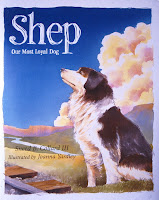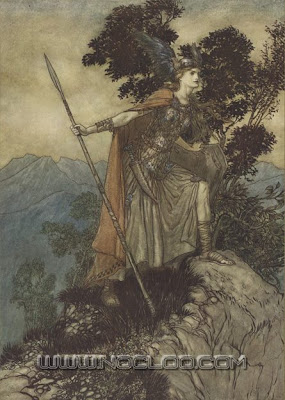Dreaming of your big break? Waiting to see your byline in
The New York Tmes or
Washington Post? Maybe seeing your name grace the pages of Cosmo or Ladies’ Home Journal or Sports Illustrated keeps you motivated.
Until you break into those national markets, smart writers localize and cash in.
Think regional publications, local websites, area newspapers.
I was lucky. When I began freelancing full-time, I broke into a national sports and fitness magazine. Within two months of my initial conversation with the editor-in-chief, I received contracts for three feature pieces.
And, I received payment up front.
At the same time, I knew if I wanted my writing career to grow, I would have to work hard and find other publications to supplement my income.
Besides, it never hurts to have a steady income stream.
How did localizing help?
I landed a steady gig at a regional newspaper, a state-wide magazine publishes a couple of my articles each year, and I launched a newspaper column geared to small weekly newspapers.
Don’t overlook the neighborhood newspaper or budding website promoting a local business. You can snag local writing gigs by keeping these points in mind.
- Develop your expertise. I’m a history nut and I enjoy current events. I’ve parlayed my interests into multiple magazine and newspaper articles, photo layouts, blogging gigs, and website writing.
- Establish relationships. So, you don’t know the editor of the local press? Go introduce yourself! Network! I didn’t know the editor or staff of a regional magazine, but once I pitched a story and spoke with him on the phone, I made a point to learn the hierarchy of their editorial staff. Now I know not to send a query to the assistant editor. I would not have know that if I hadn’t taken a vested interest.
- Fine-tune your pitch. Don’t count out any ideas. A friend who is an avid reader landed a book column in a local newspaper! One trick that helped land a steady assignment was analyzing what was covered in-house and what work was farmed out to freelancers. Once you see what needs a publication has, you can adapt your platform to fit their needs.
I still haven’t ended up in The New York Times or the Washington Post, but I will eventually. Each article I investigate for a local market builds my resume and adds exemplary clips to my portfolio.
What local markets have you pitched?
0 Comments on Localize Writing and Cash In as of 5/3/2012 6:18:00 AM

I visited my first school of 2008 yesterday. For my first school of the year, I always try to visit someplace local, in this case a K-8 school in a small logging town near where I live. The school was a delightful experience. The librarian had prepared the kids well and they asked wonderful questions after each presentation. The visit, though, also reminded me of a lesson I’ve learned rather late in my career—the value of local stories.
For most of my writing life, I’ve written about global and exotic topics, topics such as tropical rain forests, the problem of invasive species, animal adaptations, and more recently, famous historical figures. A few years ago, however, I landed the contract to write B is for Big Sky Country: A Montana Alphabet, my state’s entry in Sleeping Bear Press’s fifty-state series of alphabet books. My entry for the letter ‘S’ in that book led to a second book, Shep—Our Most Loyal Dog.
Shep is a true story of a working sheep dog that lived outside the town of Fort Benton, Montana in the 1930s. At one point, his master fell ill and died, and Shep watched as they loaded the coffin onto a train and shipped it back east for burial. For the next five and a half years, Shep met every passenger train that came into the Fort Benton station, waiting for his master to return. Along the way, Shep made new friends and became famous through newspaper and magazine articles published all around the world.
I felt very fortunate to have discovered Shep’s story—and that no one else had written a children’s picture book about him. What I didn’t realize with both B is for Big Sky Country and Shep, however, is what they would do for my career. Even with its local focus, B is for Big Sky Country has become my third bestselling book out of the fifty or so I’ve had published. Shep is off to a slightly slower start, except here in Montana, where it is by far my most popular title.
But the benefits of these local books are not limited to book sales. Their popularity immediately multiplied the number of school visits I get in and around Montana. Shep is up for the state’s readers choice award this year. Perhaps most importantly, I feel like I’ve made a contribution to the awareness and knowledge kids have about their state and its history and culture. Everywhere I go, the books stimulate lively conversations about peoples’ own histories and interests, and I like to think the books have been a catalyst for bringing people together in the state, even in small ways.
All of this points to a valuable lesson: don’t ignore local and regional topics in your writing. Even if the stories are published by smaller presses, a writer can reap significant benefits from them, both professionally and personally. I know I’ve got my ears and eyes wide open, looking for the next Montana story that heads my way.

It took me forever to find the name of the artist for this wonderful illustration. It's by Arthur Rackham, an influential illustrator around the turn of the century, who I should have learned about in school but instead learned about "real" artists and how to make mosaics.
Here's what ticks me off. There are some great books out there that have hundreds of illustrations in them. Yet there are no credits given to the artists. The book I found this pic in had not credits, but acknowledgements. This means the photo or art service. This is a disservice to the illustrator and the reader. It is also, in my opinion, an immoral industry to supply photos of works of art in the category of, essentially, clip art.
Anyways, it took a while but I found it, and discovered that Arthur Rackham was an incredibly talented and prolific illustrator. He illustrated several classic books such as Wind in the Willows, worked with Barry on some Peter Pan books, and there is a website with scores of his illustrations, but I won't put the link up because all it is is an attempt to sell prints and mugs and postcards of his art. Wouldn't he love that? How can someone with no talent themselves stoop to going around pulling bad reproductions of public domain work and make a business out of selling bad prints and matchbooks of the art? (notice the watermark on the Valkyrie illo.)
On the other hand, I'm no big proponent of what modern corporations are doing to keep their properties from falling into the public domain (like Superman), by having copyright laws changed that don't really help creators, just corporations... and "re-creating" characters so that they can legally call them new properties (like killing Superman and bringing him back... a shallow attempt to create a new property from an old one just when the copyright and trademark end was looming near.)
All the corporations, and even some art reps, were sending lobbyists to Washington to fight the Freelance Writers and Artists Protection Act, which would have removed us from anti-trust laws which disallow us from negotiating prices and terms as a group against media giants. It would be nice to have some laws concerning art and writing that actually are in the interest of artists and writers. Making Work for Hire illegal would be a good first step! And how about giving credit to all artists, whether living or dead.
The reason the Laws concerning art are important is because that affects the public attitude toward art.




